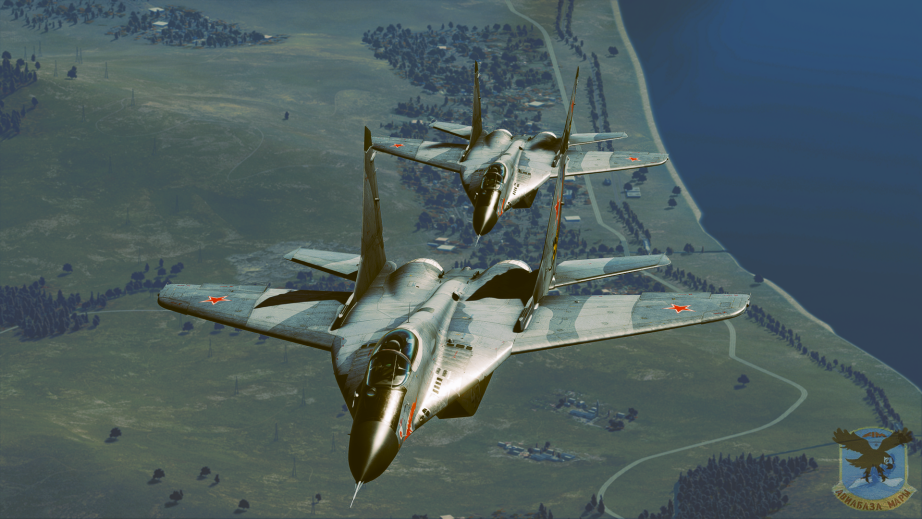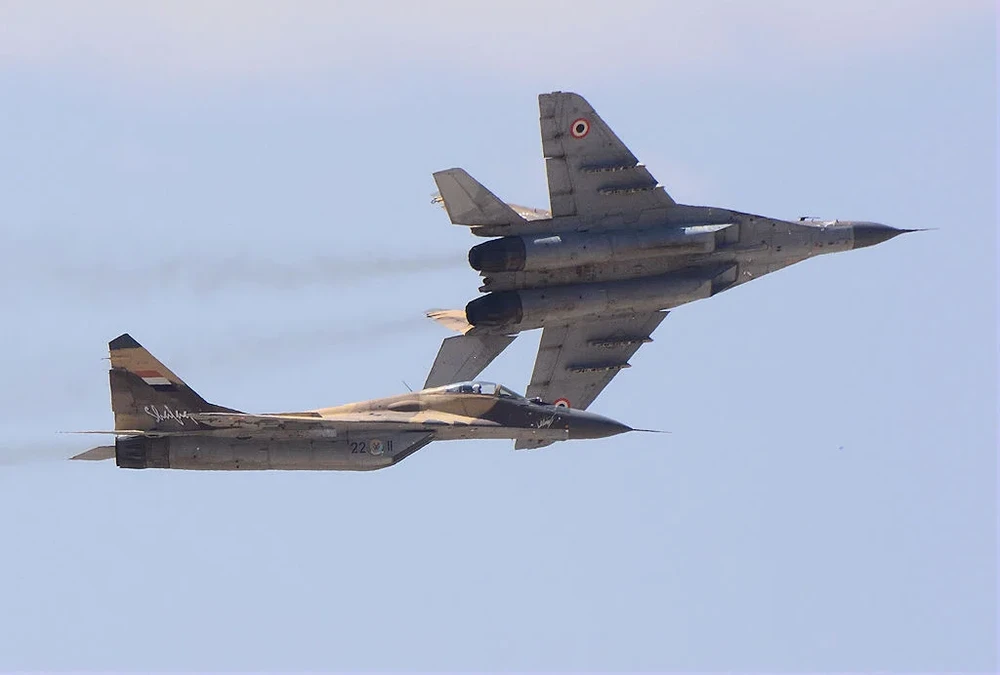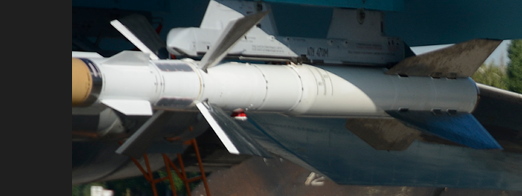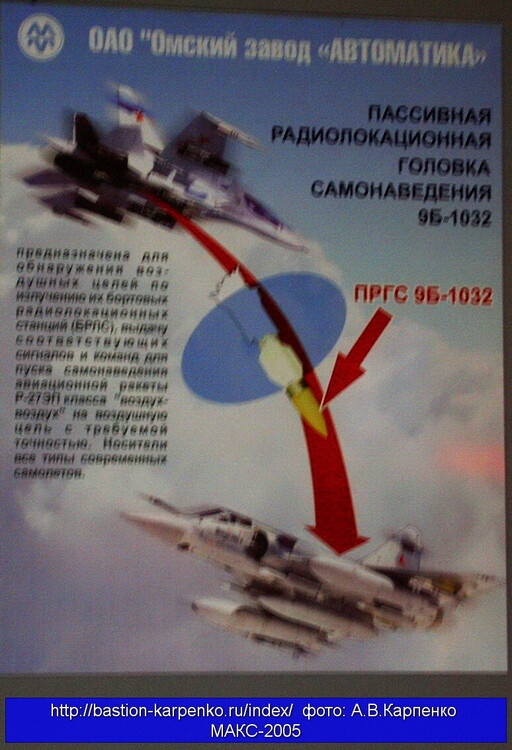-
Posts
396 -
Joined
-
Last visited
Content Type
Profiles
Forums
Events
Everything posted by Ronin_Gaijin
-
-
-
47 years ago, on October 6, 1977, Alexander Vasilyevich Fedotov, lifted a prototype of the MiG-29 aircraft into the sky. Forever in our hearts!
-
Daily MiG-29 Ukrainian 9.12 (early production model) P.S. The Tu-154 at the back celebrated its 55th anniversary from its first flight yesterday.
-

Expectation on Air to Air missiles of the MiG-29A?
Ronin_Gaijin replied to pepin1234's topic in DCS: MiG-29A Fulcrum
https://hushkit.net/2019/08/12/mig-29-versus-mirage-2000-personal-account-from-by-air-marshal-harish-masand/ and -
-
-
-
-
-
I do remember. That was why I made the post.
-
-
-
-
-
Better than the 9.19, worse than the 9.12 (aesthetically).
-
-
-
-
-
From the book "Soviet aviation missiles - Air to Air" information about the R-27 missile family. P-27 (K-27, изделие 470) Ракета имеет рулевые поверхности необычной формы «бабочка», сужающиеся к основанию. Они исключили возникновение реверса рулей, присущего ракетам схемы «утка», использующим рулевые поверхности как для управления по основным каналам, так и для стабилизации по крену и сделали возможным перехват энергично маневрирующих и высотных целей по более сложным и оптимальным траекториям. Впервые в отечественных ракетах этого класса для повышения мощности и точности отработки силовых приводов использованы гидравлические рулевые машинки с питанием от бортовой насосной станции. Помимо ракет Р-27Р с ГСН 9Б 1101К (изделие 470-1) и Р-27Т с ТГСН (изделие 470-3), на вооружение поступили их «энергетические» варианты с продолжительным временем работы двигателя Р-27ЭР (изделие 470-1Э) и Р-27ЭТ (изделие 470-3Э), а также специальная Р-27П с пассивной противорадиолокационной ГСН, целью которой являются АВАКС и самолеты РЭБ - источники мощного излучения. Р-27ЭР и ЭТ, помимо большей дальности пуска, обеспечили и возросшую с 25 до 27 км высотность поражения. При их испытаниях была получена максимальная дальность полета до 98 км. Пуск Р-27 возможен по целям со скоростями до 3500 км/ч, маневрирующим с перегрузкой 8g на высотах от 20 м с максимальным превышением или принижением относительно истребителя до 10 км. Ракеты оснащены стержневой БЧ массой 39 кг (в т.ч. 15 кг BB). Инерциальная-полуактивная ГСН P-27P разработки МНИИ «Агат» при массе 33,5 кг обладает диапазоном углов целеуказания + 50°, тепловая ГСН Р-27Т позволяет выполнять всеракурсную атаку в поле углов целеуказания + 55°. Пуск ракеты, обладающей мощной двигательной установкой, может привести к повреждению самолета-носителя или помпажу его двигателя. Это потребовало создания и для P-27 (помимо обычного пускового устройства АПУ-470) авиационной катапультой установки АКУ-470, «выстреливающей» ракету на безопасное расстояние при пуске. В целом простая конструкция Р-27, повышающая надежность, сочетается с высоким совершенством всех ее систем. Уровень оборудования ракеты характеризуется уже тем, что в процессе целеуказания ее ГСН получает цифровые команды от бортового комплекса истребителя, оперирующего 32-значными числами. Успех современного скоротечного боя решают доли секунды, и даже малейшая задержка наведения и пуска может сорвать атаку. Поэтому в ракетах нового поколения может применяться целеуказание от бортовых радиолокационных, тепло пеленгационных и оптикоэлектронных прицелов истребителя от нашлемной системы летчика (направление на цель он обозначает поворотом головы), или за самостоятельный поиск и захват цели ГСН ракеты. После получения целеуказания Р-27Р готова к пуску через 1 - 1,5 с. В двухэтапной схеме наведения Р-27Р (ЭР) при пуске на большую дальность инерциальный режим полета ракеты, ориентированный на «математическую» цель, сопровождается коррекцией ее положения по радиолинии с РЛС носителя, позволяя парировать маневры и уклонение противника. Комбинированное наведение появилось «не от хорошей жизни» - имеющаяся элементная база аппаратуры не позволяла достичь гарантированного превосходство по дальности над ракетами вероятного противника, РГСН Р-27 устойчиво захватывала цель только с 25 км, но двухэтапный полет обеспечил максимальную дальность пуска в 2 - 2,5 раза больше, выполнив заданные требования. Возможен и пуск ракеты в сторону самолета противника с последующим автономным захватом в полете. Для учебных целей служат оснащенные регистратором Р-27УТ с ТГСН и РГСН и Р-27УД, предназначенная для тренировок техсостава. В экспортном исполнении ракеты именуются P-27P1, Р-27T1, P-27ЭР1 и Р-27ЭТ1. Дальний вариант Р-27ЭМ, отличающийся двигателем и энергетикой для обеспечения вдвое более продолжительного полета, оснащен РГСН с той же двухэтапной системой наведения - инерциальной с радиокоррекцией с переходом на активное радиолокационное самонаведение на конечном участке полета. Его дальность составляет 170 км. Вариант Р-27ЭА несет активную моноимпульсную доплеровскую РГСН типа 9Б1103, позволяющую реализовать три схемы применения: двухэтапную с активным самонаведением на конечном участке, полностью автономную после начального целеуказания и запрограммированную с вводом данных бортовому автопилоту. Активная РГСН имеет вдвое меньшие габариты, чем обычная для Р-27Р, и меньшую массу аппаратной части (14,5 кг против 21,5). Применение активного самонаведения позволяет реализовать в бою принцип «пустил-забыл», высвобождая летчика для атаки следующих целей. Rough translation: R-27 (K-27, product 470) The rocket has steering surfaces of an unusual "butterfly" shape, tapering to the base. They eliminated the occurrence of rudder reversals inherent in the "duck" missiles, which use steering surfaces both for control through the main channels and for roll stabilisation, and made it possible to intercept vigorously manoeuvring and high-altitude targets along more complex and optimal trajectories. For the first time in domestic missiles of this class, hydraulic steering machines powered by an on-board pumping station were used to increase the power and accuracy of power drives. In addition to the R-27R missiles with seeker 9B 1101K (product 470-1) and R-27T with infrared seeker (product 470-3), their "energy" variants with a long operating time of the R-27ER engine (product 470-1E) and R-27ET (product 470-3E), as well as a special The R-27P is equipped with a passive anti-radar GPS, the purpose of which is AWACS and electronic warfare aircraft - sources of powerful radiation. R-27ER and ET, in addition to a longer launch range, provided an increased from 25 to 27 km engagement altitude. During their tests, a maximum flight range of up to 98 km was obtained. The launch of the R-27 is possible for targets with speeds up to 3,500 km / h, manoeuvring with an overload of 8g at altitudes from 20 m with a maximum exceeding or lowering relative to the fighter up to 10 km. The missiles are equipped with a 39 kg core warhead (including 15 kg BB). Inertial-semi-active seeker R-27R development of the Agat Research Institute with a mass of 33.5 kg has a range of target designation angles of + 50 °, the thermal seeker R-27T allows you to perform an all-angle attack in the field of target designation angles of + 55 °. The launch of a rocket with a powerful propulsion system can damage the carrier aircraft or surge its engine. This required the creation of an AKU-470 aircraft catapult for the R-27 (in addition to the usual APU-470 launcher), which "shoots" the missile to a safe distance during launch. In general, the simple design of the R-27, which increases reliability, is combined with the high perfection of all its systems. The level of the missile's equipment is already characterised by the fact that in the process of targeting its seeker receives digital commands from the fighter's on-board complex, operating with 32-digit numbers. The success of modern short-lived combat is decided by fractions of a second, and even the slightest delay in targeting and launching can disrupt an attack. Therefore, a new generation of missiles can use target designation from on-board radar, thermal direction finding and optoelectronic sights of a fighter from the pilot's helmet-mounted system (he indicates the direction to the target by turning his head), or for an independent search and capture of the missile's seeker target. After receiving the target designation, the R-27R is ready for launch in 1 - 1.5 seconds. In the two-stage guidance scheme of the R-27R (ER), when launched at a long range, the inertial flight mode of the missile, focused on a "mathematical" target, is accompanied by correction of its position along the radio line from the carrier's radar, allowing parrying manoeuvres and evasion of the enemy. Combined guidance appeared "not from a good life" - the existing element base of the equipment did not allow achieving guaranteed range superiority over the missiles of a likely enemy, the radar seeker R-27 steadily captured the target from only 25 km, but the two-stage flight provided a maximum launch range of 2 - 2.5 times longer, meeting the specified requirements. It is also possible to launch a missile towards an enemy aircraft with subsequent autonomous capture in flight. For educational purposes, R-27UT equipped with a thermal seeker recorder are used to both radar seeker and R-27UD, designed for training technical staff. In the export version, the missiles are called P-27P1, P-27T1, P-27ER1 and P-27ET1. The long-range version of the R-27EM, which differs in engine and power to ensure twice as long flight, is equipped with a radar seeker with the same two-stage guidance system - inertial with radio correction with the transition to active radar homing at the end of the flight. Its range is 170 km. The R-27EA variant carries an active monopulse Doppler radar seeker type 9B1103, which allows for three application schemes: two-stage with active homing in the final section, fully autonomous after initial targeting and programmed with data input to the on-board autopilot. The active radar seeker has twice the dimensions of the usual R-27R, and a lower weight of the hardware (14.5 kg versus 21.5). The use of active homing allows you to implement the "fire and forget" principle in combat, freeing the pilot to attack the following targets.
-
Yes, you are right.
-
I just gave you the best case scenarios that would be easier for you to understand. I did not mean to have a detailed discussion on all the nuances in which the missile might not work. Regarding your TWS comment, please remember that we are talking 1983 Fox1 era.
-
Let me help you understand the way it was to be used. For a bandit (radar equipped fighters) coming at you head on with their radar on (radar cone is pointed at you), you can fire and forget passively. (Same for a bandit that is coming towards you at an angle, but the radar cone is pointed at you) For bandits that have a 360 degree radar (AWACS) you can shoot the missile passively from all aspects. For bandits that are jamming (jets with an internal or external jammer, or dedicated jamming aircraft), since their jamming signal has 360 degree coverage, you can shoot the missile passively from all aspects.


.thumb.jpg.edf777859e89d32e8c871eb155b4b164.jpg)


.thumb.jpg.153d54e2d394a26e4773e8fe0e2e6d2b.jpg)


.thumb.jpg.65772826ec93b34f31fc26d86bba07e6.jpg)
.thumb.jpg.8a53543ba8af7cc0c83b843e18c1d8c5.jpg)
.thumb.jpg.5f0529119aa73a6595d12526ad5ac225.jpg)
.thumb.jpg.3f785169619e57a2252a523b60ab7325.jpg)
.thumb.jpg.5f135d6b8ca8ff802446d21f998d48b3.jpg)
.thumb.jpg.fc0b9cafd75b2626adb73fdac664022a.jpg)
.thumb.jpg.2598cd69c5eea9eae76fc8f9708064a0.jpg)
.thumb.jpg.aa8697988e7f07d40031c8fb4847a25e.jpg)
.thumb.jpg.f8d1206add973633f9b5d883b382968e.jpg)
.thumb.jpg.8635e91b93c20e0490ab643ec885ff54.jpg)

.thumb.jpg.c3c6bbea90e8ae3f129f9c70261ab54f.jpg)



